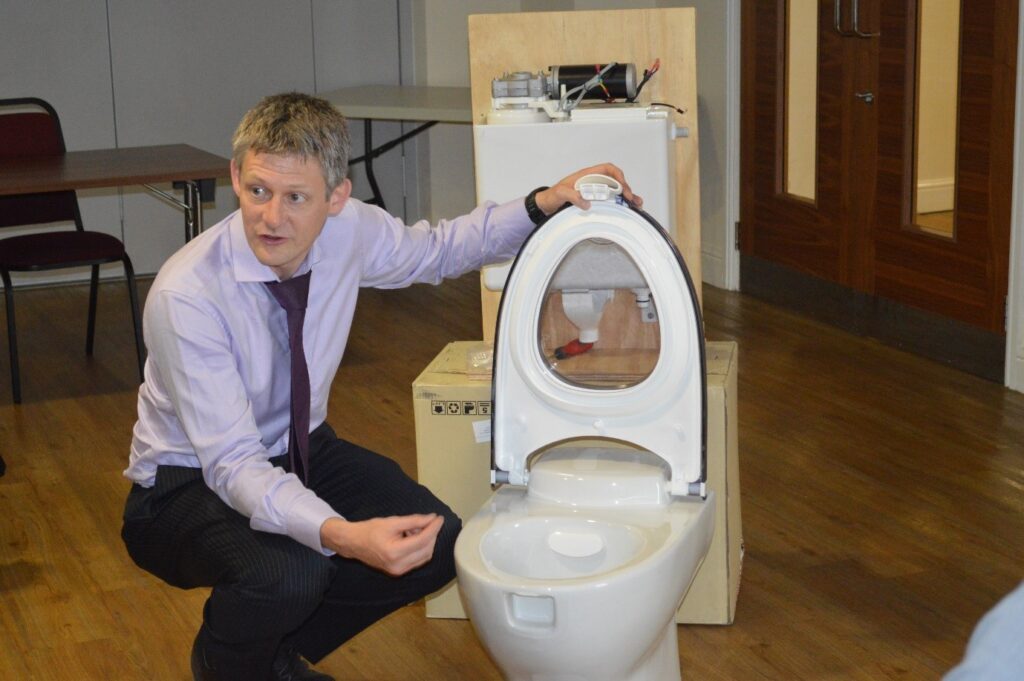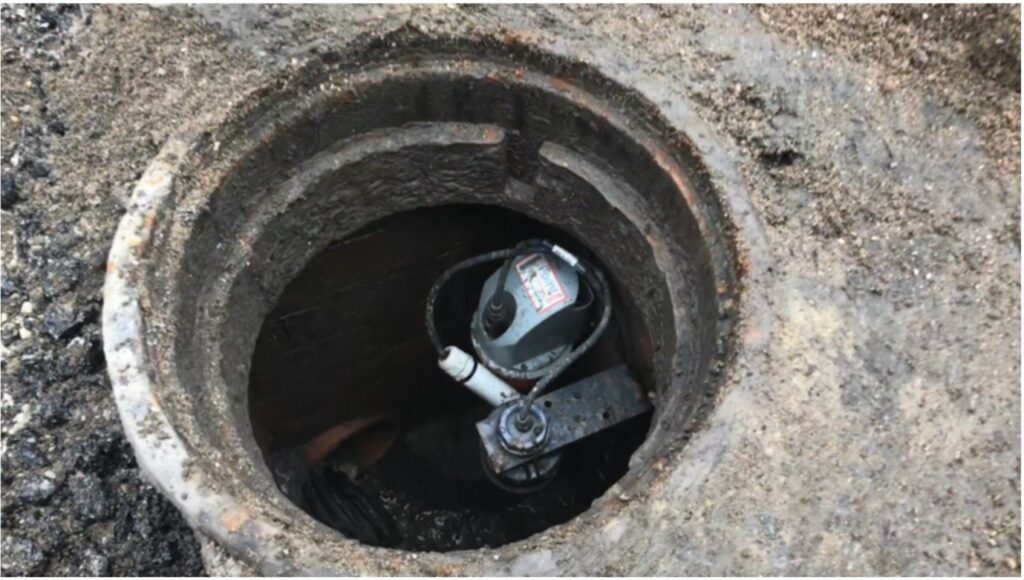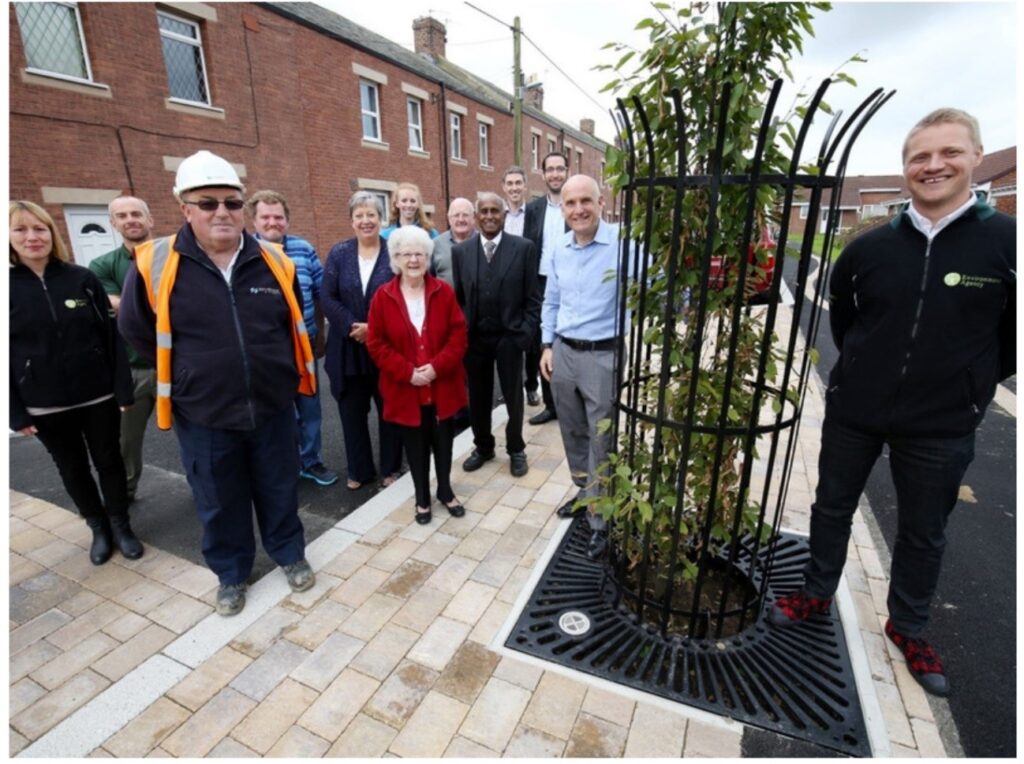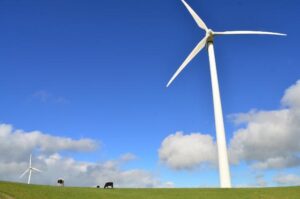Wastewater treatment, microbial electrolysis cells and resource recovery, interdisciplinarity and stakeholder engagement in engineering projects with Dr Sarah Cotterill.

Dr Sarah Cotterill
UCD School of Civil Engineering
UCD Profile
Q: My first question is about your background and how you came to engineering?
A: I’ve got quite an interdisciplinary background. My first degree was in biology at Newcastle University. Within this I was really interested in ecology and conservation. I did some voluntary field work in Sumatra on a research project looking at self-medicative behaviour in Orangutans. After this I went on to do a Master’s degree in Anthropology (at Durham University). I wanted to pursue a PhD in Conservation Biology but I struggled to find funding, so I took a position at the local water company as an analytical chemist, analysing water quality. I also learned how to use the chromatographs and the mass spectrometers. This all turned out to be extremely helpful when I was doing my PhD. I had applied for a technician’s job at Newcastle University, but the Professor advertising the role suggested that I do a PhD instead. The PhD was part of an industry-focused Doctoral Training Centre led by five UK universities and industrial partners, specialising in water engineering.
Q. Did you find it a challenge to move to engineering?
Part of the PhD included a really intensive taught Master’s element at Cranfield University, which focused on water and wastewater engineering, process science, hydraulics, asset management and all of those kind of fundamental parts of environmental engineering. So my biology and chemistry background really helped me transition into this discipline. I think if it didn’t have that structure to the degree program it would have been quite difficult.
The project I applied for, as well as the discipline more broadly, allowed me to combine my different academic interests and also the training I had in using the analytical equipment. Not only that, but that there was a direct end use for all of those things. So, I can’t say I always wanted to do engineering, but it was definitely a way of bringing my previous experience and interests together. I think engineering is a hugely interesting and impactful discipline that creates a lot of opportunities for working across sectors.
Q. You’ve done some work on the production of hydrogen and other products from wastewater. Tell us a bit about the potential within this technology and the challenges in applying it
I worked on a technology called a Microbial Electrolysis Cell, which is an engineered biological process which can reduce the amount of energy used in wastewater treatment. Wastewater contains a huge amount of chemical energy, but this is mostly locked up in the compounds that are removed when wastewater is treated. Bioelectrochemical systems, such as microbial electrolysis cells, are capable of converting this into electricity, hydrogen or other valuable chemicals, using microbes as catalysts. Hydrogen is a gas, so it separates from the wastewater more easily than other products might. The main issue with it, within the water sector, is that there isn’t necessarily a direct end use for hydrogen at the minute. In reality, I don’t see hydrogen being the most feasible or economically viable way forward for that technology. There are a lot of other things that you can produce, such as bleach or caustic soda, depending on how you design the system, the input, the configuration, there are lots of different variables within that. These products could be directly used on site, providing a direct use within the wastewater treatment process and a reduction in the energy and transport costs for obtaining that product too.

Hydrogen gas in gas bag prior to analysis for gas composition.
The pilot-scale microbial electrolysis cells (Sarah built in her PhD) in a shipping container on a wastewater treatment plant.

Q. Are these products often used within the wastewater treatment plants themselves?
Resource recovery and creating products from waste is still quite a new concept, although there are case studies where these technologies are implemented at full scale. The concept of the circular economy and resource recovery has been talked about for quite a long time now, but it doesn’t always happen that much in practice. A lot has been demonstrated at lab scale but it’s not necessarily implemented in the real world. There’s a variety of different things that you can recover from the waste; cellulose fibres, bioplastics or energy etc.
Q: Are the current plants set up to do any of this?
A lot of places are not set up for this. If you were to look at the leading examples, it would be the likes of the Netherlands and Denmark. There are examples of this happening in the UK and Ireland, but it is not widespread. There are quite complex challenges in implementing this way of working. There are also economies of scale to consider, for instance not every site has staff permanently working there. Some of the technologies that you might want to implement are not viable on a small site, because they require quite a lot of operation and maintenance. There are a lot of reasons why it is a slow adoption process.

On top of the advanced anaerobic digestor at Howdon Wastewater Treatment Works in the UK. The biogas produced here is processed and refined so it can be injected into the grid. Photo Credit: Northumbrian Water Ltd.
Q: What kind of innovations are happening in water engineering?
In terms of innovations and new technologies, there are probably too many to mention in any real depth. There are technologies that have been developed to reduce the amount of energy that is required in the wastewater treatment process. Something that was developed at UCD in Chemical & Bioprocess Engineering is a membrane aerated biofilm reactor. There are other things like what I’ve worked on, bio-electrochemical systems that can produce electricity or hydrogen gas. There are also innovations outside of the core treatment processes, that can be implemented at a building level, like an airflush toilet which can reduce the amount of potable water that’s consumed by 75%. Or the use of robotics and sensors in pipes to detect and repair leaks in the network.

An airflush toilet, made by Propelair, which only uses 1.5 L of potable water per flush instead of the standard 6 L used in a conventional toilet.
Innovation can and is already occurring throughout the engineered water cycle, whether in treatment plants themselves or in the distribution pipelines or at the point of use for the consumer. I think it’s about thinking, okay where are the challenges, where are the opportunities? Whether it’s about trying to reduce the amount of energy that is used, or trying to reduce the amount of water lost, or optimising the process and saving money, because privatised companies are thinking about the bottom line.
I think there’s a really big interest in the use of data in the water sector – particularly in the UK but beyond that, as well – and what that can enable in terms of achieving operational efficiencies and expanding asset understanding and optimisation etc. One of the projects I worked on previously was collecting a variety of data in real time to better understand and subsequently actively control the movement and the discharge of storm water. I think the water sector is starting to think less about assets being fixed and stationary and more about how they all fit together as pieces of the puzzle. How data and sensors and monitoring can tell us in real time how things are functioning, where there is capacity in the network, where aspects of the network might be overloaded and what implications that might have downstream.

Ultrasonic sensor installed in a manhole to provide real-time data on the flow in the sewer and the impact of sustainable drainage systems installed in that street.
Q: So through data and sensors, is there a much fuller picture available of what’s going on to today’s engineer than in the past?
A: There can be. The issue comes down to resources available, to the infrastructure. So although it’s possible, it doesn’t necessarily happen, for instance 1) the data isn’t always collected and 2) the data isn’t always available. It might be down to the cost of actually putting sensors in, or alternatively, understanding the value that can be derived from that additional data. From a holistic point of view, that data can help with optimization or to make operational efficiencies. But if a company is constrained financially, it may not be their first priority if there are other technical or environmental concerns to address first. The other side of things then is access to data. This is something that has been raised a lot recently. Huge amounts of data are gathered in everyday life that goes nowhere and this can be a barrier to innovation. Sometimes there are obviously reasons why companies don’t want to, or aren’t able to share data – it might be commercially sensitive or constrained by GDPR – but where this doesn’t apply, creating more access to data could create more opportunities for innovation, and potentially more informed solutions too.
Q: Clearly you have an interest in the interaction of research and industry, in the application of research. Tell us about your experience of this
A: Yes. I’m really interested in that, the practical application of research, whether that’s through industry testing or the commercial development of ideas. My doctorate was actually something that’s called an EngD, rather than the PhD. The key differences is that the thesis contains all the elements that a PhD would, but it also has an applied industry-focused chapter. That can be a business plan for implementing a solution that’s been developed or it could be a cost benefit analysis of a technology. Essentially, it’s a practical way of evaluating the technology’s readiness and the impact it may have in the real world.
My postdoctoral role at the Water Hub, also involved industry collaboration and innovation elements. I was working on much shorter-term innovations with a network of more than 200 SMEs, their potential end users and community groups and other stakeholders. It was looking at and co-creating solutions between different stakeholders, leveraging funding and helping them to monitor those new products in live testing and validation sites. It involved finding an SME that had a new R&D product to test or validate and finding their end user, bringing those two together to develop the solution so that it meets both people’s needs, addressing the problem at hand. I think fundamentally that’s what engineers are, they’re trying to create solutions. As a researcher, I’m really keen to work with industry and wider partners to address their challenges and their needs with a strong research element – and I think this can be mutually beneficial.

An example of one of the co-created solutions created by two SMEs – integrating sensors and control systems into a rainwater attenuation planter.
Q: Do you think your interdisciplinary background helps you navigate all those different needs?
A: The fact that I have a varied background does probably drive me to work with other disciplines more. It’s also I think, a reflection on the type of projects that I like to be involved with. I’ve worked with other engineering disciplines but also geographers, architects, biologists, chemists and computer scientists. I haven’t done that much yet with arts and humanities. Beyond academic disciplines I’ve also worked with a variety in terms of SMEs and water companies and consultancies and charities and community groups. This is something I’d like to work more on. Multidimensionality has challenges, it increases the complexity of the project and the opportunities for things to go wrong. But it can also bring fresh, new ways of thinking about things that are more likely to be accepted.
Q: What is it like bringing the public and community stakeholders on board with infrastructural projects?
A: While it might create conflicts early on in the project and delay it at that point, involving all the various aspects ultimately means you’ve got that opportunity for feedback and to learn about those things before it’s too late. I think that is particularly important for an infrastructure project which is going to cost a lot of money and result in a permanent thing a lot of the time. If you’re digging up the road and putting something in, you’re fundamentally changing the structure of the landscape. You don’t want to be going back and revisiting that. You want to make sure that you’re minimizing the amount of time that you are causing that disruption. By having that more open and engaged dialogue early on, you’re smoothing things out further down the line.

Stakeholders involved in sustainable drainage project – including community ‘champions’, the local authority, the UK Environment Agency, businesses, contractors and more. Photo Credit – The Water Hub.
Q: I know you’ve not been in the Irish context for too long, but what kind of challenges do you see in Irish water infrastructure compared for instance to the UK?
This is something that I’ve been asked quite a bit since moving here. I am still figuring out exactly how everything fits together. To some degree, the challenges are very similar between Ireland and the UK, if we look at the concurrent issues in terms of aging infrastructure, growing populations, climate change. All of those things are very similar but they operate in a slightly different landscape in terms of governance and structure and also where they’re at in terms of timeline. For instance the point at which privatisation come about. The UK water sector is complex and also varies within the UK as well. Water was privatized in England and Wales more than 30 years ago so the water supply and the wastewater services are offered by a number of regional companies. They are regulated by economic and environmental and public health regulators. Scotland and Northern Ireland have one water supplier within them. In Ireland there is a single national utility, Irish Water, which was of course much more recently established, in the last decade.
I think one of the other things that’s really interesting about Ireland and the governance of water infrastructure is the fact that island has such a large rural population. I think around 10% of the population are part of the group water schemes, which include public and private supplies. They are much more locally and regionally managed, community based. That’s something that’s quite unique to Ireland, I think, and quite interesting to look at. So, there are opportunities to draw comparisons and learn from practice and innovation and research between the UK and Ireland, but there are also quite distinct differences in terms of the governance structure, the timeline on that, and the geography and population distribution.
Q: Water scarcity and flooding are big issues. Tell us about the impact of concerns about climate change and sustainability on water engineering?
A: Well, there’s been two droughts in in the past few years. A lot of people think water scarcity is about the amount of rainfall, but it’s not always down to that. You can get shortages on a local or regional level because the network is under more stress than it’s able to cope with. There are water quantity and water quality concerns within Ireland. Quantity can be both too much and too little, so there are challenges around flooding and there are obviously issues of water shortages in the greater Dublin area too. These are all things that, looking to the future, will become more important.
Public health systems designed to treat water and wastewater have been around for over a hundred years. They’re fundamentally about making things safe for discharge into the environment and making it fit for human consumption. But some of the processes we use today have changed very little in more than a hundred years. The problem is that whilst these technologies are reasonable at removing the main contaminants, the process is often costly in terms of the energy that goes into it. Energy is often wasted by the process itself but it’s also wasted by the failure to recover some of the value locked into the compounds we’re trying to remove. There’s another layer to the problem, which is essentially that these processes are good at removing the well-known or regulated components, but the challenges are around contaminants of emerging concern. If you start to think about things like microplastics or antibiotics, these traditional systems weren’t originally designed to remove those things. It’s not known how well they do remove them or if they remove them at all.
There is a real growing interest in new developments, in new technology innovations which provide the flexibility to meet the needs of growing human population but simultaneously do that whilst reducing the environmental footprint of the process itself. The goal of wastewater treatment is always going to be creating a treated effluent which can be safely discharged into the environment, just like the main aim of drinking water treatment is to create something that is fit for human consumption. But now there’s a move to viewing them as much more than that, to viewing wastewater treatment plants as proactive resource producers, rather than just resource consumers. It’s about doing this in a more holistic way, reducing the amount of energy used, but also creating opportunities to recover energy and value from the wastewater itself. It’s about doing more with less. And that’s where the data can fit in in terms of telling us where we can make some of those savings.
It’s also important to create systems of infrastructure that are adaptable, to be able to cope with change. Historically they have relied upon fixed processes that are not adaptable. The challenges now, such as pollution incidents, aging infrastructure or population growth, are all underpinned by the fact that the systems are designed to a deal with a fixed amount of waste or to supply a fixed quantity of water. There’s no real flexibility to deal with a change in flow or a change in biological load that would occur if that if the population or climate changed.
Q. That brings us on nicely to the question of resilience in water systems which I know you’re very interested in as well. Tell us about how you understand that in water engineering
I’ve mentioned quite a lot of the challenges that we’re going to face. A lot of these will be exacerbated by uncertainty. They’re going to put a lot of pressure on the operating conditions in the environment. In terms of water supply, we’re going to see threats around water delivery and in terms of the demand for water resources. Resilience is a really interesting term, and I think it’s growing in importance and application. People tend to use it for the ability to withstand shocks and stresses while continuing to kind of maintain key function, being able to cope with something and continue to do what it’s intended to do. My work in this area has largely been in collaboration with University of Exeter. They developed something called the Safe & SuRe framework which enables people to look at the relationship between threats and their consequences in relation to the water sector. This framework also differentiates between systems which are reliable and systems which are resilient. A reliable system seeks to minimize or eliminate failure, it would be trying to create a system which can continuously provide whatever services the sector requires. A resilient system, is designed to be safe to fail – the goal is not to prevent failure, but to ensure that the performance is sustainable. That it can be maintained long term despite social and economic limitations or constraints. No matter what’s thrown at it, a resilient system can still provide a sustainable level of performance.
Q: Finally, you’re part of the Centre for Irish Towns and I know recently you’ve been thinking about water resilience and some of the issues Irish towns face in tandem
A: Yes, Philip Crowe and I were working on a proposal about building water resilience in Irish towns. A lot of people look at water in relation to cities, but we really wanted to look at towns. Partly because towns are so prevalent in Ireland – about a third of the population of Ireland live in towns – but they are critical to the rural economy and the provision of services. But they also face multiple challenges. You could look at the resilience of Towns from multiple different perspectives, considering a variety of different types of infrastructure. We wanted to look at the lack of resilience in water systems to cope with current and future disruptions. The things we want to look at varied on timescale, but they had similar impacts or effects, such as Covid, Brexit, and climate change. They all have impacts, they are all disruptors or threats that will have an impact on a town and its water infrastructure.
One of the things that we saw with Covid, particularly in the UK, was that a lot of people moved out of the big cities, and they moved to second homes or they moved back in with family. There was a migratory shift out of cities into towns. That has a huge impact on the water infrastructure. A lot of people would be thinking about this from a transport perspective or from the viewpoint of rural economies. Water infrastructure might go unnoticed. But every piece of water infrastructure is designed around the amount of people that it serves. Any changes can really stress the system. So Covid is a short term effect, but what might happen with climate change, where we start to see climate migration and related challenges? Essentially, we wanted to look at the impact of these threats, these disruptors on issues like the capacity for safe and effective wastewater treatment, and the likelihood of water shortages or flooding incidents in the case of climate change. We also wanted to look at the opportunities that are created by the interdependent challenges of vacant spaces and water. If vacant spaces suddenly start being reused, what impact does that have on the capacity of water systems to meet potable water demand? What impact does that have on somewhere that might be quite drought prone?


